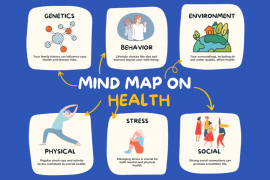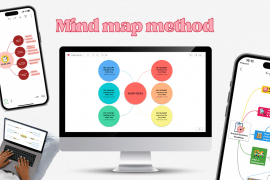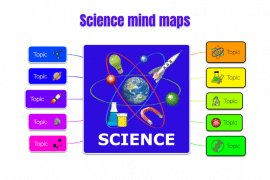Experts estimate that our minds have between 60,000 – 80,000 thoughts a day. Our brains work like little factories and the synapses never cease to pass chemical or electrical signals to each other. In fact, this is the beauty of our amazing brain. Each thought generates another one and so on and by the time we reach a certain opinion, we begin to wonder how it all started. This is not another study made by some great scientists but a thing we’re all experiencing, almost on a daily basis. Sometimes we really want to keep track of every thought we have, so we don’t miss anything. Do you have any moments when you say to yourself ‘Oh, I had such a good idea in mind! I forgot it.. ‘
And this is when mind maps take the stage.

We can think of our main idea that prevails in a day as the central topic of a mind map. All the other thoughts and reflections represent the main topics and subtopics that you add to the map.
In our types of representation as human beings, such as visual, audio or kinaesthetic, there is always a dominant one which supports us in learning, memorizing and in gathering knowledge. We can find what kind of representation predominates for us by taking a simple test. Knowing your type is important as you can benefit from it in your studies and in your personal development.
Now, say you’re the visual type. In this case, you can personalize your thoughts-mind map with all sorts of images and videos from your computer or the internet, anything that suits your string of beliefs and ideas. You can change the shape or color of the topics, the mind map’s background or the connecting lines between the topics to make it more appealing.
On the other hand, if your main type is audio, then you can add songs and recordings to your topics and subtopics and even record yourself and add your audio notes to the topics.
How does this sound so far?
Well, there’s more. Many times we want to share our ideas with others, ask for feedback or simply brag about them 🙂 This is possible even when using mind maps, with just one click. With the Share option, you can allow anyone into your world of ideas.
And the cherry on top is the fact that whenever your ideas are being interrupted by mundane thoughts besides your goals and objectives, thoughts such as ‘Did I make that commission? Did I answer that email? Did I forget to buy milk?’, you can always add a floating topic, outside the mind map and write them down. In the end, what is the point of mind mapping if not brainstorming and remembering thoughts?
In any case, mind mapping is a great way to structure your beautiful mind. Does this sound like something of use to you?
Keep it smart, simple and creative!
The Mindomo Team






